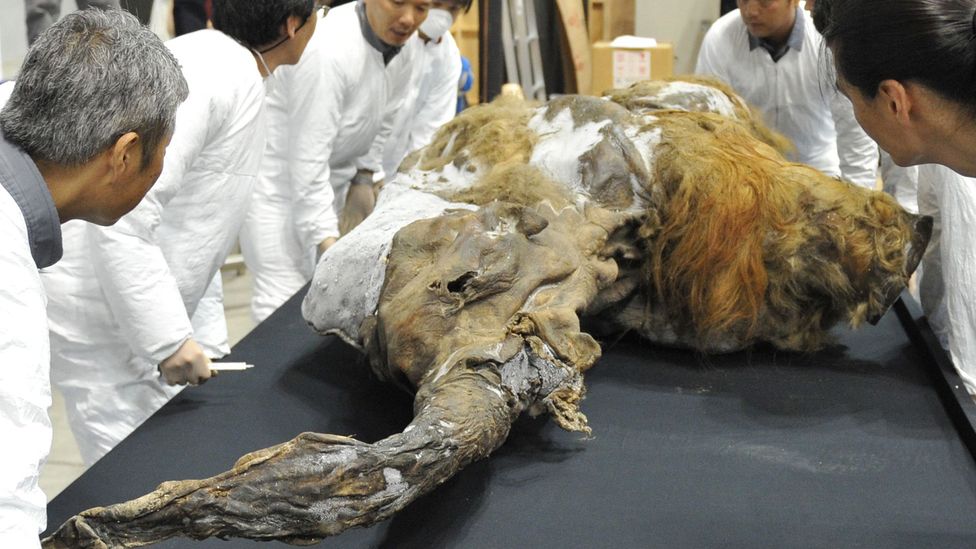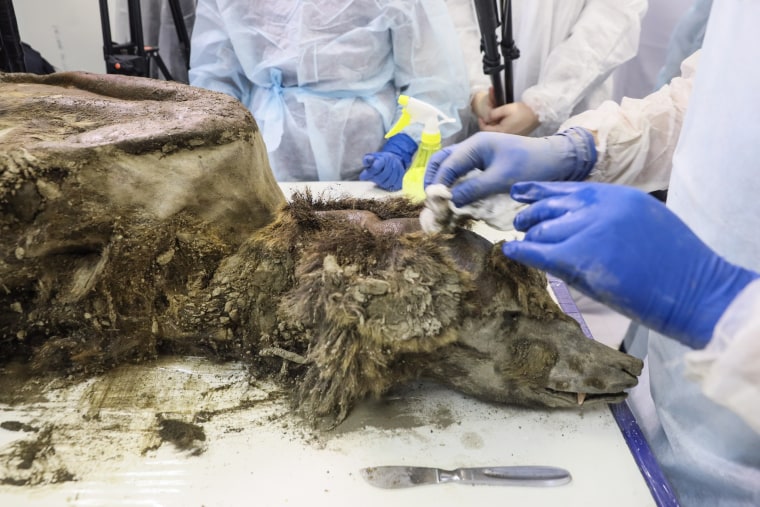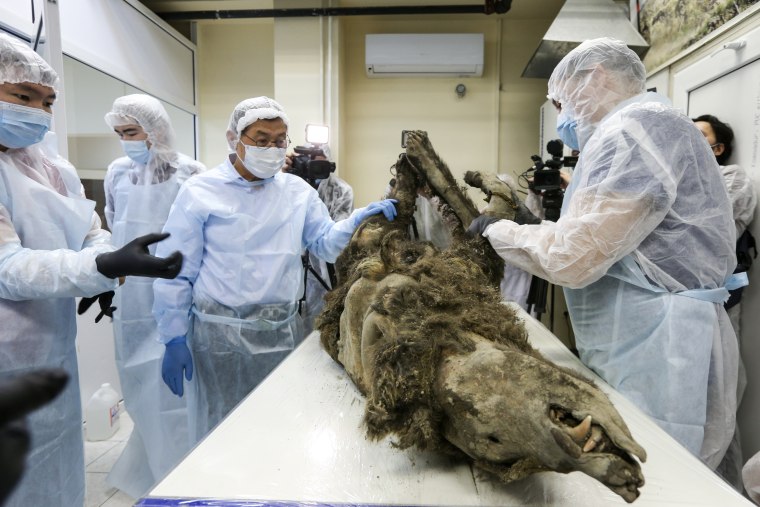A brown bear that remained almost perfectly preserved in the frozen wilds of eastern Siberia for 3,500 years has undergone a necropsy by a team of scientists after it was discovered by reindeer herders on a desolate island in the Arctic.

“This find is absolutely unique: the complete carcass of an ancient brown bear,” said Maxim Cheprasov, laboratory head at the Lazarev Mammoth Museum Laboratory at Northeastern Federal University in Yakutsk, eastern Siberia.
The bear was found by reindeer herders in 2020 sticking out of the permafrost on Bolshoy Lyakhovsky Island, part of the New Siberian archipelago, about 2,900 miles east of Moscow.

Scientists perform an autopsy on a fossil brown bear in Yakutsk, Russia, on Tuesday. Vadim Skryabin TASS via Zuma Press
Because it was found just east of the Bolshoy Etherican River, it has been called the Etherican brown bear.
The extreme temperatures helped preserve the bear’s soft tissue for 3,460 years, as well as the remains of its final meals: bird feathers and plants. The bear is described as being about 5 feet tall and weighing almost 172 pounds.
“For the first time, a corpse with soft tissues fell into the hands of scientists, which gave us the opportunity to study the internal organs and examine the brain,” Cheprasov said.
The scientific team in Siberia cut away the bear’s tough hide, allowing scientists to examine its brain, internal organs and carry out a series of cellular, microbiological, virological and genetic studies.
The bear’s pink tissue and yellow fat were clearly visible when the team dissected the ancient beast.

The bear died from a spinal injury, said Maxim Cheprasov of the Lazarev Mammoth Museum Laboratory. Vadim Skryabin / TASS via Zuma Press
They also sawed through his skull, using a vacuum cleaner to suck out dust from the skull bone, before removing his brain.
“Genetic analysis has shown that the bear does not differ in mitochondrial DNA from the modern bear of northeastern Russia: Yakutia and Chukotka,” Cheprasov said.
He said the bear was probably between 2 and 3 years old. He died from a spinal cord injury.
However, it is unclear how the bear arrived on the island, which is now separated from the mainland by a 31-mile strait. You may have crossed over the ice, swum, or the island may have still been part of the mainland.

The Lyakhovsky Islands contain some of the richest paleontological treasures in the world and attract both scientists and ivory traders seeking woolly mammoths.